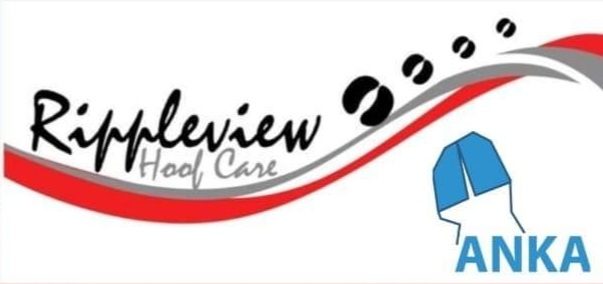Consumer demands may be fickle and often are not based on a realistic view of livestock production. Yet today’s consumer focus on animal welfare should factor into dairy producer decisions. While market demands have to be taken into consideration, farm management decisions must be based on the science behind animal health and welfare.
Producing food with value-added qualities sought by consumers provides farmers with a higher return on investment than those that don’t meet their standards. Higher retail values, and consumer trust and loyalty, are the potential economic rewards for increasing cow comfort.
“Putting the cow in her comfort zone in order to increase productivity,” is sensible and can satisfy consumer welfare needs, said Dr. Jen Burton, veterinarian with Organic Valley. Ideally, farmers could just ask their cows about comfort levels and eliminate stressful practices, but since they can’t, “Behavior is the best indicator of welfare.”
Stressed animals show signs of poor health, have lower productivity and exhibit behavioral issues. Some farming practices are stressful to the animals, and any changes to the environment that can reduce or eliminate these practices is warranted.
Current welfare concerns
“What the public wants, and what is the right thing to do,” are two factors all farmers must consider. “Consumer values can’t tell us what to do but let us know what they want. We do see fads or trends in animal welfare,” Burton said.
One issue of current concern is that of tail docking. The public abhors this practice, and science does not support it. Somatic cell counts and health concerns have not proven to be valid reasons for tail docking.
There is “not a lot to gain, other than convenience,” with tail docking, Burton said, and farmers who opt to continue the practice are “not going to get a lot of sympathy. Farmer preference and cost do not resonate as reasons with consumers.”
On the horizon is the issue of dehorning. Big conventional dairy farms are transitioning to polled genetics. But for organic farmers in particular, there aren’t enough suitable polled genetics available.
Best practices, such as better pain management and disbudding at 1 week old, are steps to take now.
Using these best practices until we can get to the point of polled genetics is the best option, she said.
Concerns over close confinement are about to hit the dairy industry and have a big impact, Burton predicted. On facilities with tiestalls and stanchions, use should be all about the cow’s time budgeting needs, and animals should be out of the stalls daily.
“Science is pretty neutral on this right now,” and the advantages and disadvantages of close confinement are “pretty balanced,” she said, but consumers care about how long the animal spends in close confinement. “They will continue to rely on you to keep the cows comfortable.”
Getting comfortable
Just how to do so means paying attention to your cows.
Thermal comfort is an important issue in cow health. There is a broad range of temperature levels in the thermal neutral zone. When they are in the zone, they don’t need to utilize a lot of energy to remain comfortable. Knowing when your cows are no longer in the zone is important.
The first indicator of heat stress will be a change in respiration rate from a base rate of about 25 to 50 breaths per minute. Establishing the baseline for your herd, and observing for changes from this rate, can indicate a problem before it becomes significant.
During periods of heat stress, feed intake and efficiency will decrease. An immediate drop in milk production will be seen. Reproductive performance is negatively impacted, compromising calf health. When pregnant cows are kept cool, there are “some pretty big improvements in calf health,” she said.
Feeding grain causes cows to produce heat as grains take more energy to digest than forages.
“Up to 70 percent of the ration should be shifted to the cooler part of the day if you are feeding grains,” Burton advised.
Cold, too, is a stressor. Not only are cows uncomfortable, but their metabolism increases and their energy production is going into generating heat, not producing milk.
Stress responses
Protecting animals from stress means reducing their fear response. While fight-or-flight responses are needed in a crisis situation, they are damaging in day-to-day living. Stress causes an increase in cortisol, which increases blood glucose levels. White blood cells move away from vessel walls and become unavailable for tissue repair. Poor immune response – and slower healing – result.
New routines and rough handling are common reasons for fear in dairy herds. Ultimately, the somatic cell count increases and mastitis cases increase if the fear response is continually activated.
“Animals that are with a trusted leader ... decrease the stress hormones,” Burton said. “Predictable transitions are also really helpful” in reducing the fear response.
Skilled handlers know that turning their head and shoulders so animals only see one eye “can do wonders” in a skittish herd. Approaching animals head-on mimics a predator.
Firm restraint of the animal, when required, is also a stress reducer. Too gentle or too rough, and the animal is equally fearful.
Fear responses can become programmed into the animal. And an animal can transmit that response to the herd via pheromones, which send out a signal on the breath and the skin.
Little things like moving from light to dark areas, a changing light pattern or a slippery walkway can be a source of fear, Burton said.
“If fear happens, the animal will remember it each time if they can’t process it,” she said. “Fear can be contagious.”
“Cows want to do everything together,” so all animals need to be able to comfortably access feeders simultaneously. Keeping cows fed means making feeding a comfortable experience. Dominant and submissive cow behaviors should be observed.
Knowing what changes are sensible and adopting them to keep customer confidence makes sense, as long as they are beneficial to the animal and feasible for the farm.
Sensible, cost-effective changes which positively impact animal health and welfare, and which satisfy a consumer need, are the types of changes that bring a positive return on investment to your farm business.
“Welfare is a place where you can get a return on your investment,” Burton said. “Don’t fall behind ... act when welfare and the market converge,” making sensible changes that will positively impact cow comfort and improve your bottom line. PD
Jen Burton spoke at the NOFA-NY Organic Dairy and Field Crop Conference, held in March 2016.
Tamara Scully, a freelance writer based in northwestern New Jersey, specializes in agricultural and food system topics.




